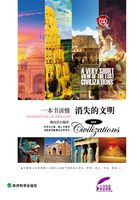
第11章 古埃及——奇特的尼罗河文明(2)
The ancient Egyptians enjoyed a variety of leisure activities, including games and music. Senet, a board game where pieces moved according to random chance, was particularly popular from the earliest times; another similar game was mehen, which had a circular gaming board. Juggling and ball games were popular with children, and wrestling is also documented in a tomb at Beni Hasan. The wealthy members of ancient Egyptian society enjoyed hunting and boating as well.
古埃及人的日常生活和娱乐文化
大多数古埃及人都是这片土地上的农民,他们的住所成员只限于直系家属。用泥砖建造房子是为了在酷热的天气里保持一份清凉,每一家都有一个顶部露天的厨房,里面安装有一个磨面粉的磨石和烤面包的小烤箱。房子里墙被漆成白色,可以覆盖上染色的亚麻壁毯;地板上铺的是芦苇席,上面摆放着木凳、床、桌子等家具。
古埃及人在卫生和外观上花费了很大的心思,大多数人在尼罗河中沐浴,还使用动物脂肪或滑石粉做成的膏状肥皂擦洗身子。男人们为了清洁,刮光了全身的毛发,用香水和芳香油膏掩盖不良气味和润肤。他们的服装是使用简单的亚麻布通过漂白制成的,上层阶级的男人和女人都时兴戴假发和饰品,他们还喜欢化妆。孩子们出生后不穿衣服,直到长大成人才穿衣,等到大约12岁那年男孩就要割包皮、剃头。那时候,母亲负责照顾孩子,而父亲负责挣钱养家。
音乐与舞蹈对于那些玩得起的人来说是流行的娱乐项目,早期的乐器包括长笛和竖琴,类似于小号、双簧管和管乐器的乐器后来得到发展并流行起来。在新王国时期,埃及人在钟、大镲、小手鼓以及鼓上演奏,还从亚洲进口琴和瑟。叉铃是一个像拨浪鼓一样的乐器,在宗教仪式中特别重要。
古埃及人喜欢各种休闲活动,包括游戏和音乐。塞尼特是一种棋盘游戏,棋子可以随机移动,这种游戏从早期时代就很受欢迎。另一个类似的游戏是迈罕,有一个圆形的游戏板。变戏法和玩球是孩子们喜爱的游戏,有关摔跤游戏也被记录在贝尼·哈桑的一座坟墓中。古埃及社会上的富人们还喜欢打猎和划船。
2. Great contribution to the civilization in many fields
The ancient Egypt is one of the oldest civilizations in the history. The ancient Egyptian civilization includes architectural art, language art, science and technology, medicine, mathematics and others. Among them, the Pyramid is the representative and milepost of the ancient Egyptian civilization.
众多领域内的伟大文明贡献
古埃及是世界上历史最悠久的文明古国之一,古埃及文明包括建筑艺术、文字艺术、科学技术、医学、数学等内容,其中,金字塔是古埃及文明的代表作和里程碑。
Egyptian Pyramids:The tombs of the kingswhich are mysterious miracles
The Egyptian pyramids are a masterpiece of ancient Egyptian civilization, and Egypt’s national symbol. Pyramids are located in the ancient Upper Egypt and Lower Egypt on the banks of the Nile River, in Sudan and Egypt today.
The Egyptian pyramids are masonry structures for the kings in the ancient slavery. These rulers in history were called “Pharaohs”. The Pharaohs ruled humankind when they were alive, and they wished to dominate the nether world after death. So the Pharaohs’ bodies would be eviscerated, impregnated with preservatives and filled with spices to be kept long, which is called“Mummy”. The Egyptian pyramids are the tombs for mummies.
According to legend, before the 3rd dynasty of ancient Egypt, whether the kings and ministers or the ordinary people,they would be buried into a rectangular grave built with mud-bricks after death. Later, a clever young man named Imhotep ivented a new construction method when he designed for the king. He used the stones from the mountain instead of mud-bricks, and continued to modify the design program of the tomb. Finally, he completed a trapezoidal pyramid. This is the prototype of the pyramid that we see today. Each side of the pyramid is a triangle and looks like the Chinese character “Jin”, so we call it “Jin Zi Ta”.
During the 2nd and 3rd dynasty, the Egyptians began to think that the king would be a god after his death. In the Pyramid Text, there is a sentence: “Build a high ladder for him so that he can go to heaven.” The Pyramid is such a ladder. Meanwhile, the pyramid is said to be a symbol of sun rays that honor the sun god.
埃及金字塔:国王的陵墓,神秘的奇迹
金字塔是古埃及文明的代表作,是埃及国家的象征。金字塔分布在尼罗河两岸的古上埃及和下埃及,在今苏丹和埃及境内。
金字塔是古埃及奴隶制国王的砖石陵寝。这些统治者在历史上称之为“法老”。法老们不仅活着时统治人间,而且幻想死后主宰阴界。因此,法老死后便取出内脏,再浸以防腐剂并填入香料,以图将尸体长久保存。这种尸身被称为“木乃伊”,金字塔便是存放木乃伊的陵寝。
相传,在古埃及第三王朝之前,无论王公大臣还是老百姓死后都被葬入一种用泥砖建成的长方形的坟墓。后来,有个叫伊姆荷太普的聪明年轻人,在给埃及法老设计坟墓时发明了一种新的建筑方法。他用山上采下的石块来代替泥砖,并不断修改修建陵墓的设计方案,最终建成一个梯形金字塔,这就是我们现在所看到的金字塔的雏形。金字塔的每个侧面都是三角形,样子就像汉字的“金”字,所以人们叫它“金字塔”。
大约在第二至第三王朝的时候,埃及人产生了国王死后要成为神的观念,在《金字塔铭文》中有这样的话:“为他建造起天梯,以便他可由此上到天上。”金字塔就是这样的天梯,同时金字塔又表示对太阳神的崇拜,象征着太阳的光芒。
The Valley of the Kings:The valley thatplaced the tombs for Pharaohs
The Valley of the Kings is a valley in Egypt where, for a period of nearly 500 years from the 16th to 11th centuries BC, tombs were constructed for the Pharaohs and powerful nobles of the New Kingdom (the Eighteenth to the Twentieth Dynasties of Ancient Egypt). The valley stands on the west bank of the Nile, opposite Thebes (modern Luxor), within the heart of the Theban Necropolis. The wadi consists of two valleys, East Valley (where the majority of the royal tombs are situated) and West Valley.
With the 2005 discovery of a new chamber, and the 2008 discovery of two further tomb entrances, the valley is known to contain 63 tombs and chambers. It was the principal burial place of the major royal figures of the Egyptian New Kingdom, together with those of a number of privileged nobles. The royal tombs are decorated with scenes from Egyptian mythology and give clues to the beliefs and funerary rituals of the period. Almost all of the tombs seem to have been opened and robbed in antiquity, but they still give an idea of the opulence and power of the Pharaohs. This area has been a focus of archaeological and egyptological exploration since the end of the eighteenth century, and its tombs and burials continue to stimulate research and interest. In modern times the valley has become famous for the discovery of the tomb of Tutankhamun (with its rumours of the Curse of the Pharaohs), and is one of the most famous archaeological sites in the world.
帝王谷——放置法老陵墓的山谷
帝王谷是古埃及的一个山谷,从公元前16世纪到公元前11世纪,在近500年的历史期间,这里一直是建造新王国时期(古埃及的第18~20王朝)的法老和王公贵族陵墓的地方。山谷位于尼罗河的西岸,在底比斯城(今卢克索)对面底比斯墓葬地的心脏地带上。这座旱谷包括两大山谷,东谷(大多数的皇家陵墓所在地)和西谷。
如今的帝王谷已经包含63个坟墓和墓室。包括2005年发现的一座新墓和2008年发现的两道古墓入口。它是埃及新王国的皇室人物和某些高级权贵的主要埋葬地点,皇家陵墓上面装饰着埃及神话的场景,流露出那个时期的宗教信仰和丧葬仪式的蛛丝马迹。在古代,几乎所有的陵墓都被打开过或遭抢过,但是它们依然可以展示出法老的财富和权力。自从18世纪末以来,这个地方一直是考古和古埃及探索的焦点地带,其陵墓和葬礼一如既往地具有研究价值和兴趣性。在现代,帝王谷因图坦卡门陵墓的发现而闻名天下(连同有关法老的诅咒的传言一起流传),这里成为世界上最著名的考古遗址之一。